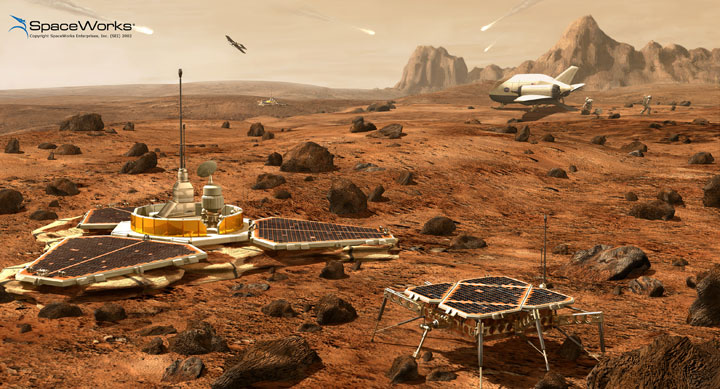TORONTO – In most science fiction movies, astronauts are put into stasis, or deep sleep for deep space missions. Turns out there’s a lot more science than fiction behind the idea.

SpaceWorks Enterprises Inc., a U.S.-based aerospace engineering company that specializes in future technologies and space exploration recently presented their research at the International Astronautical Congress in Toronto last week suggesting that a crew on its way to Mars might be able to be put into deep sleep for the voyage.
READ MORE: SpaceX unveils spacecraft designed to fly astronauts to space station
The NASA-funded research suggests that astronauts be put into deep sleep, or torpor, using therapeutic hypothermia (TH), something that’s not actually new. TH borrows from nature: many animals such as bears and marmots utilize hibernation when needed.
In order to achieve TH, the body’s temperature is lowered, which also lowers the metabolic state and allowing the body to use minimal energy to stay alive. Just think about stories of people being found out in wilderness during the winter, yet surviving. It’s just like that.
But how would you keep astronauts healthy on a nine-month trip to Mars?
SpaceWorks proposes parenteral nutrition, which would be administered through a catheter. The supplement would include the needed vitamins, electrolytes needed elements as well as other nutritional supplements.
As for lack of physical activity, even on current long-duration trips in space, like on the International Space Station, astronauts need to use a treadmill so that their muscles don’t atrophy. During torpor, there is the possibility of electrical stimulus being used to activate the muscles.
READ MORE: NASA’s new Martian braking system paving way to easier human colonization
The proposed torpor would allow smaller crew compartments to be constructed, thus making launch loads lighter and less expensive.
However, the idea is not without its challenges: the longest a person has been put into TH is about a week, which is far shy of the intended nine-month trip to Mars. There are also medical considerations such as the possibility of infection or bleeding while in torpor.
If the technology is successful, it also opens up the possibility of further missions to the outer reaches of our solar system — or beyond.


Comments